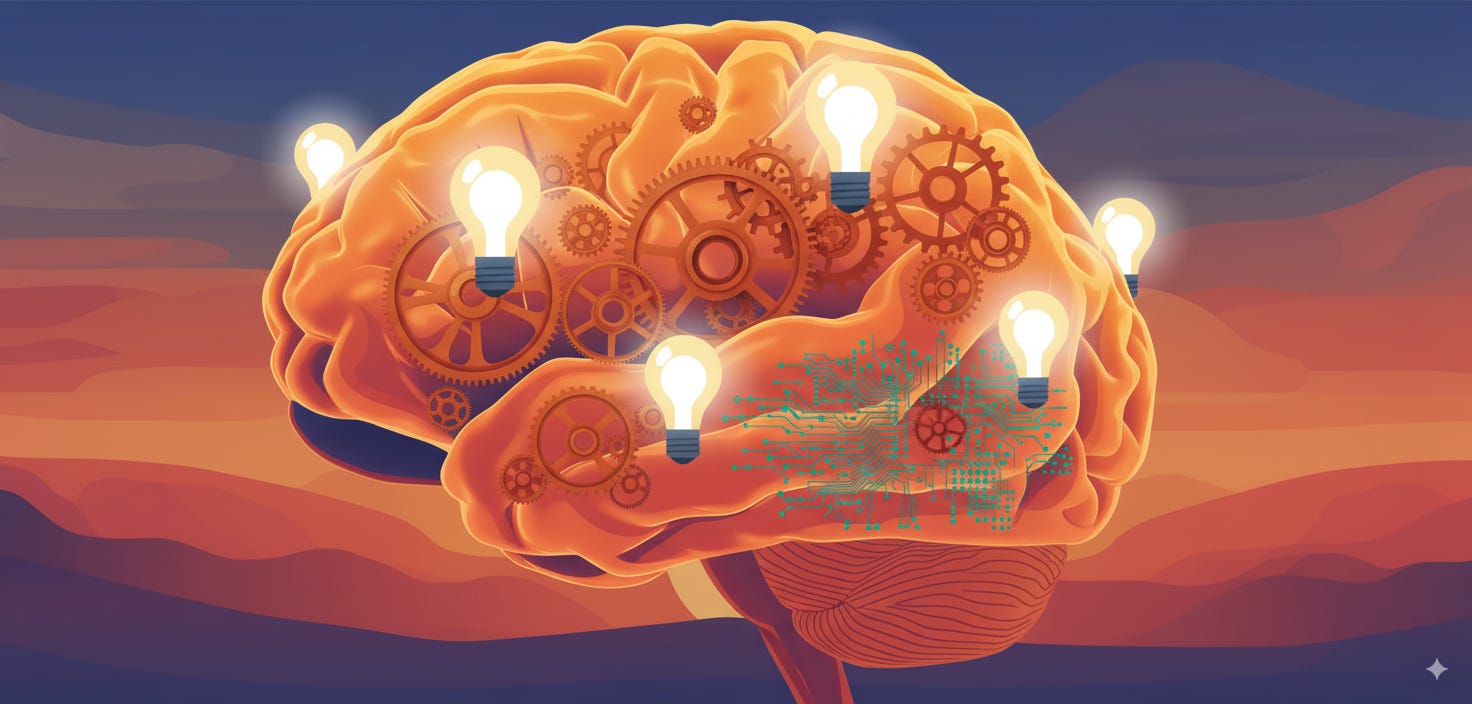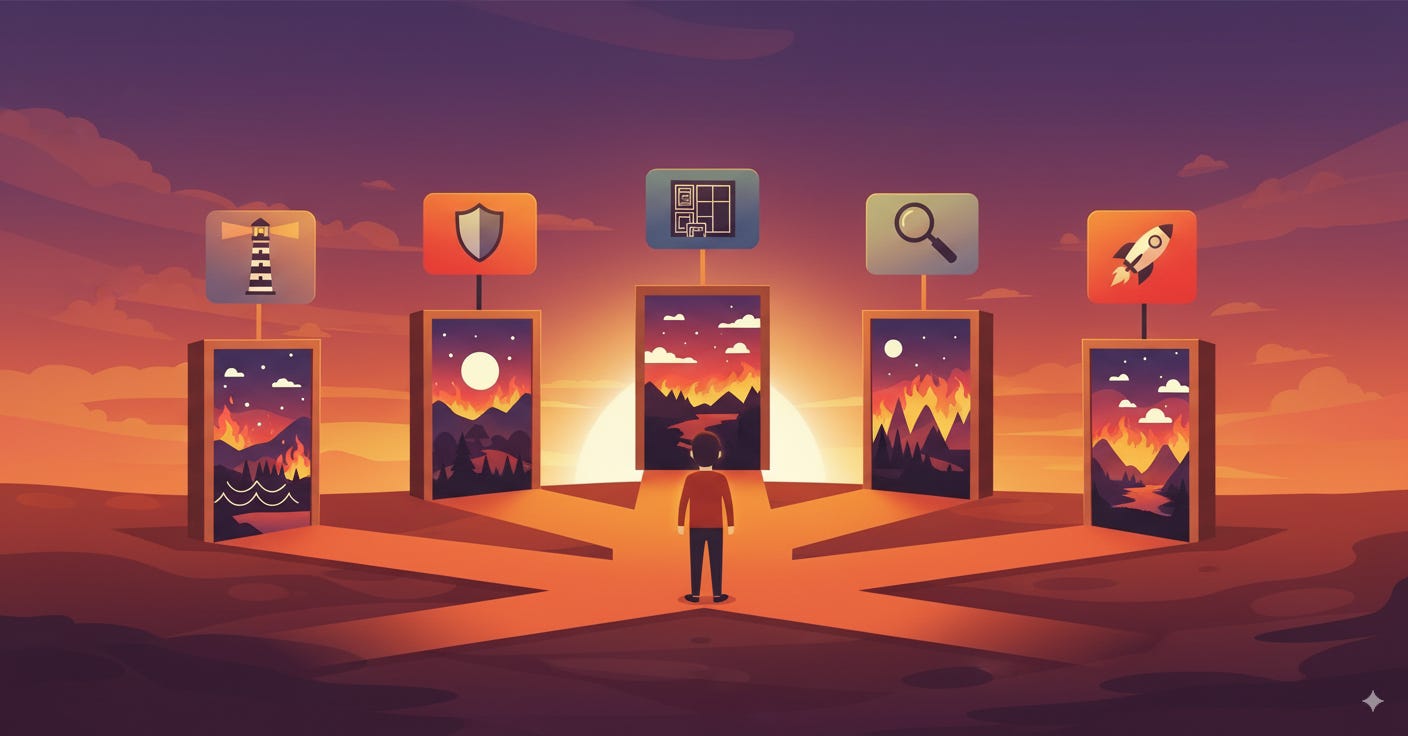What I Look For in an AI PM - Part 3: The Thinking Test
5 take-home questions designed to reveal how you think, not just what you’ve done.
In Part 1 of this series, I outlined the six core characteristics I look for in an AI Product Manager. In Part 2, I dove into the resume screen - the tactical dos and don’ts for getting past that first hurdle.
But a resume only shows me a spark. It tells me where you’ve been, but it doesn’t tell me how you think. For that, we need to go deeper. This brings us to the next stage in my hiring process: a set of five “take-home” questions. These are designed to see how you approach hard, ambiguous problems and how you align with the qualities I value most.
A Quick Note on the “Why” Behind These Questions
Before we dive in, a few thoughts on this approach:
It’s a two-way street. Hiring is about finding a mutual fit. The best candidates are interviewing the team right back. These questions should give you a clear sense of the kind of thinking our team values and whether this is the right environment for your skills.
It’s not a pressure test. I expect candidates to take the time they need to answer these on their own schedule (within reason). This isn’t about dropping everything to prove your dedication; it’s about seeing your thoughtful answers to complex challenges.
It’s a powerful filter. Some candidates don’t want to spend time on these questions, and that’s perfectly okay. For the specific 0-to-1 roles I’m hiring for on my team, I want someone who gets genuinely excited by these kinds of problems. A lack of enthusiasm is a great early signal that this might not be the right fit for either of us (see the first bullet).
It’s about the how, not just the what. To put it simply: the resume tells me what you’ve done. These questions tell me how you think.
With that, here are the five questions I ask.
The 5 Questions I Ask Every AI PM Candidate
Question 1: The Vision Pitch
“Pitch me a 0-to-1, AI-first product that is not a chatbot or a simple content generator. Crucially, your pitch must define both the first-order product (the immediate solution for a specific user) and the second-order opportunity (the platform, paradigm shift, or system it could become). Explain why starting with your chosen first-order product is the strategic entry point to unlocking the larger vision.”
What I’m looking for: This gets at Visionary Leadership & Systems Thinking. I want to see if you can think in first and second orders, connect a practical beachhead product to a massive, ambitious vision, and articulate that strategy with clarity.
Question 2: The Commoditization Crisis
“Imagine you are six months into building a new AI product. Your core differentiator is a complex, proprietary prompt chain that creates a uniquely magical user experience. A new major model update is released, and a single API call now replicates your ‘magic’ for free. Your team is looking to you. What do you do? Provide a plan that details not just your strategic moves, but also how you would lead the team through this pivot.”
What I’m looking for: This helps me understand your ability to show “Clarity in Chaos” & Empathetic Resolve. Your strategic response is important, but I’m even more interested in how you would communicate with and lead your team through a high-stakes, morale-testing pivot.
Question 3: The System Deconstruction
“Deconstruct an AI-enabled workflow or system you have personally built or use frequently. Don’t just tell me what it does. Explain at a high level the system architecture and, more importantly, the insights you gained about building AI systems through this process. What were the most surprising failure modes, and how did you design around them?”
What I’m looking for: This targets Deep AI Intuition & Applied Creativity. I want to see that you’re a hands-on builder who thinks in terms of systems, not just features. The best answers reveal a deep, practical understanding of the nuances and limitations of AI.
Question 4: The Undervalued Opportunity
“Pick a well-known AI product. Identify what you believe is its most undervalued or misunderstood feature. Articulate why the market may be underestimating its potential, and describe the second-order opportunity that could be built by doubling down on this specific capability.”
What I’m looking for: This is a pure test of Exceptional Product Taste. Can you spot non-obvious potential where others don’t? Can you see a small feature and connect it to a massive, unexplored opportunity? This reveals your ability to see the world differently.
Question 5: The Leap of Faith Narrative
“You have a high-conviction idea for a product that has no direct user precedent and is difficult to A/B test. You have no hard data to prove your case. How do you build the narrative? What ‘tea leaves’ (qualitative signals, proxy data, tech trends) would you gather and weave together to make a compelling argument for this leap of faith?”
What I’m looking for: This tests Compelling Product Storytelling and Full-Spectrum Execution. Building 0-to-1 products often means making bets without a clear data trail. I want to see how you build conviction, inspire belief, and make a compelling case for taking a smart, calculated risk.
The candidates who submit thoughtful, well-reasoned answers to these questions are the ones who move on to the interview stage - the final step in the process. It’s a high bar, but seeing how a PM grapples with these challenges is the best signal I have for finding the right builder to help shape the future.






I've been really enjoying this series and this post is hands down the strongest yet. I especially love your framing of first-order product and second-order thinking, it's a great way to capture the systemic evolution of strategy as opposed to the more linear, milestone-driven nature of traditional short- and long-term goal setting.
One idea that could be an interesting follow-up is related to ethics and bias, perhaps as part of the system deconstruction section. Something like: “How do you ensure your AI product aligns with ethical standards and avoids unintended bias?” It could provide insight into how candidates consider the broader societal impact of the AI systems that they’re building.
Overall, I love how these questions push candidates to think beyond execution and into systems-level reasoning. Looking forward to your next set of posts in this series!
Great thoughts!
1) Would you say Q1 and Q5 are similar, but Q1 is a fine-grained version? Also, for Q5, I'm thinking of how pitching "Renting out Bed and Breakfast for SF conferences" sounded like 20 years ago - fair example?
2) Also, broken link to Part 1 and Part 2 :P
http://link_to_part_1/ ....